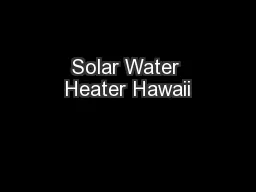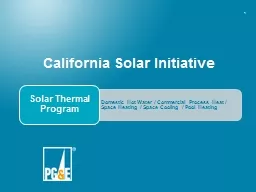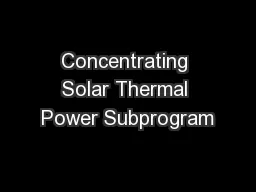PPT-A Design Analysis of Solar Thermal Systems
Author : dudeja | Published Date : 2020-08-28
for Cardinal Newman Hall Randall Lessard ET 494 Spring 2014 Instructor Dr Cris Koutsougeras Advisors Dr Rana Mitra Mr Byron Patterson Originally The goal of
Presentation Embed Code
Download Presentation
Download Presentation The PPT/PDF document "A Design Analysis of Solar Thermal Syst..." is the property of its rightful owner. Permission is granted to download and print the materials on this website for personal, non-commercial use only, and to display it on your personal computer provided you do not modify the materials and that you retain all copyright notices contained in the materials. By downloading content from our website, you accept the terms of this agreement.
A Design Analysis of Solar Thermal Systems: Transcript
Download Rules Of Document
"A Design Analysis of Solar Thermal Systems"The content belongs to its owner. You may download and print it for personal use, without modification, and keep all copyright notices. By downloading, you agree to these terms.
Related Documents














